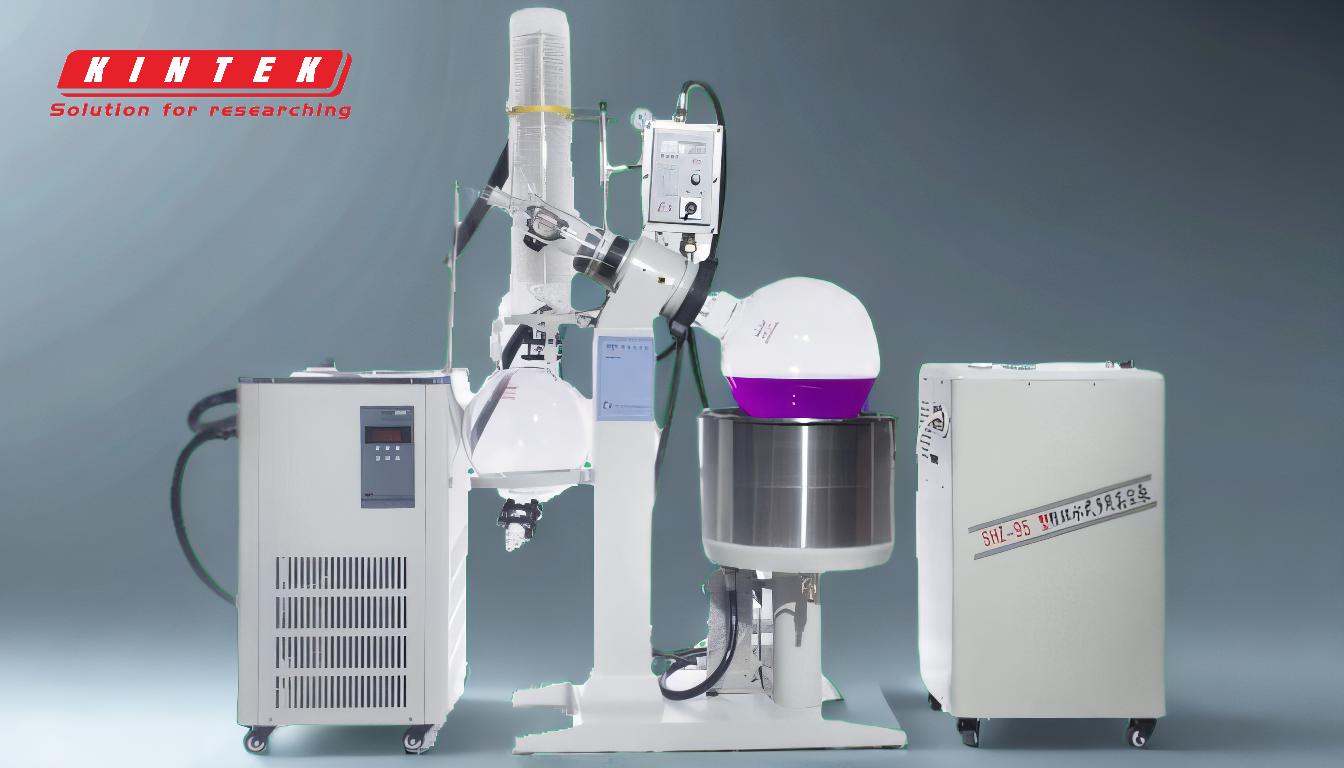Molecular distillation is a specialized separation technique that operates under high vacuum conditions to purify and concentrate thermally sensitive materials, such as fish oil or high molecular weight compounds. The process relies on the principle of mean free path, where molecules travel short distances without collisions, enabling separation based on their individual volatility and molecular weight. Key steps include the formation of a thin liquid film, evaporation of molecules, their travel to a condensing surface, and collection of purified distillates. The method ensures minimal thermal degradation, making it ideal for preserving beneficial compounds like fatty acids while removing contaminants. Its efficiency is enhanced by low operating temperatures, short residence times, and precise control of vacuum conditions.
Key Points Explained:

-
Principle of Mean Free Path:
- Molecular distillation leverages the concept of mean free path, which is the average distance a molecule travels before colliding with another molecule.
- Under high vacuum conditions, the mean free path increases, allowing molecules to travel freely without collisions.
- Lighter molecules with longer mean free paths escape the liquid surface and condense on a nearby surface, while heavier molecules with shorter mean free paths return to the liquid phase.
-
High Vacuum Conditions:
- The process operates under extremely low pressure, which reduces the boiling points of the materials and minimizes thermal degradation.
- High vacuum ensures that the distance between the heating and condensing surfaces is less than the mean free path of the molecules, enabling efficient separation.
-
Formation of a Thin Liquid Film:
- The feed material is spread into a thin film on a heated surface, typically using rotating wipers or similar mechanisms.
- This thin film maximizes the surface area for evaporation and ensures uniform heating.
-
Evaporation and Condensation:
- Light molecules evaporate from the liquid film due to heat and travel a short distance to the condensing surface.
- Heavy molecules, unable to travel the required distance, return to the liquid phase.
- The condensed light molecules are collected as the purified distillate, while the residue is recirculated or collected separately.
-
Low Operating Temperatures:
- Molecular distillation operates at temperatures below the boiling point of the materials, preventing thermal decomposition.
- This feature is particularly beneficial for thermally sensitive compounds, such as omega-3 fatty acids in fish oil.
-
Short Residence Time:
- The process ensures minimal exposure of the material to heat, reducing the risk of degradation.
- Short residence times in the heating zone are achieved through rapid evaporation and condensation.
-
Separation Without Boiling:
- Unlike traditional distillation, molecular distillation does not rely on boiling. Instead, it uses evaporation under vacuum to separate compounds.
- This method is ideal for high molecular weight materials with low volatility.
-
Applications and Advantages:
- Molecular distillation is widely used in the purification of fish oil, essential oils, and other thermally sensitive compounds.
- It effectively removes contaminants, such as heavy metals and pesticides, while preserving beneficial components.
- The process is energy-efficient and environmentally friendly due to its low operating temperatures and minimal waste generation.
-
Safety Considerations:
- The process involves handling flammable materials under vacuum, requiring careful design and operation to prevent explosions or leaks.
- Proper equipment maintenance and safety protocols are essential to mitigate risks.
-
Equipment Design:
- Molecular distillation devices, such as rotating film systems, are designed to optimize heat transfer and separation efficiency.
- Features like PTFE wipers and precise temperature control ensure consistent performance and high-quality distillates.
By understanding these key points, equipment and consumable purchasers can appreciate the unique advantages of molecular distillation and make informed decisions about its application in their processes.
Summary Table:
| Key Aspect | Description |
|---|---|
| Principle of Mean Free Path | Molecules travel without collisions under high vacuum, enabling separation. |
| High Vacuum Conditions | Reduces boiling points and prevents thermal degradation. |
| Thin Liquid Film Formation | Maximizes surface area for efficient evaporation and uniform heating. |
| Evaporation & Condensation | Light molecules condense on a surface; heavy molecules return to the liquid. |
| Low Operating Temperatures | Prevents thermal decomposition, ideal for sensitive compounds like omega-3. |
| Short Residence Time | Minimizes heat exposure, reducing degradation risks. |
| Separation Without Boiling | Uses evaporation under vacuum, suitable for high molecular weight materials. |
| Applications | Purifies fish oil, essential oils, and removes contaminants like heavy metals. |
| Safety Considerations | Requires careful handling of flammable materials under vacuum. |
| Equipment Design | Features PTFE wipers and precise temperature control for consistent performance. |
Discover how molecular distillation can optimize your processes—contact our experts today!









